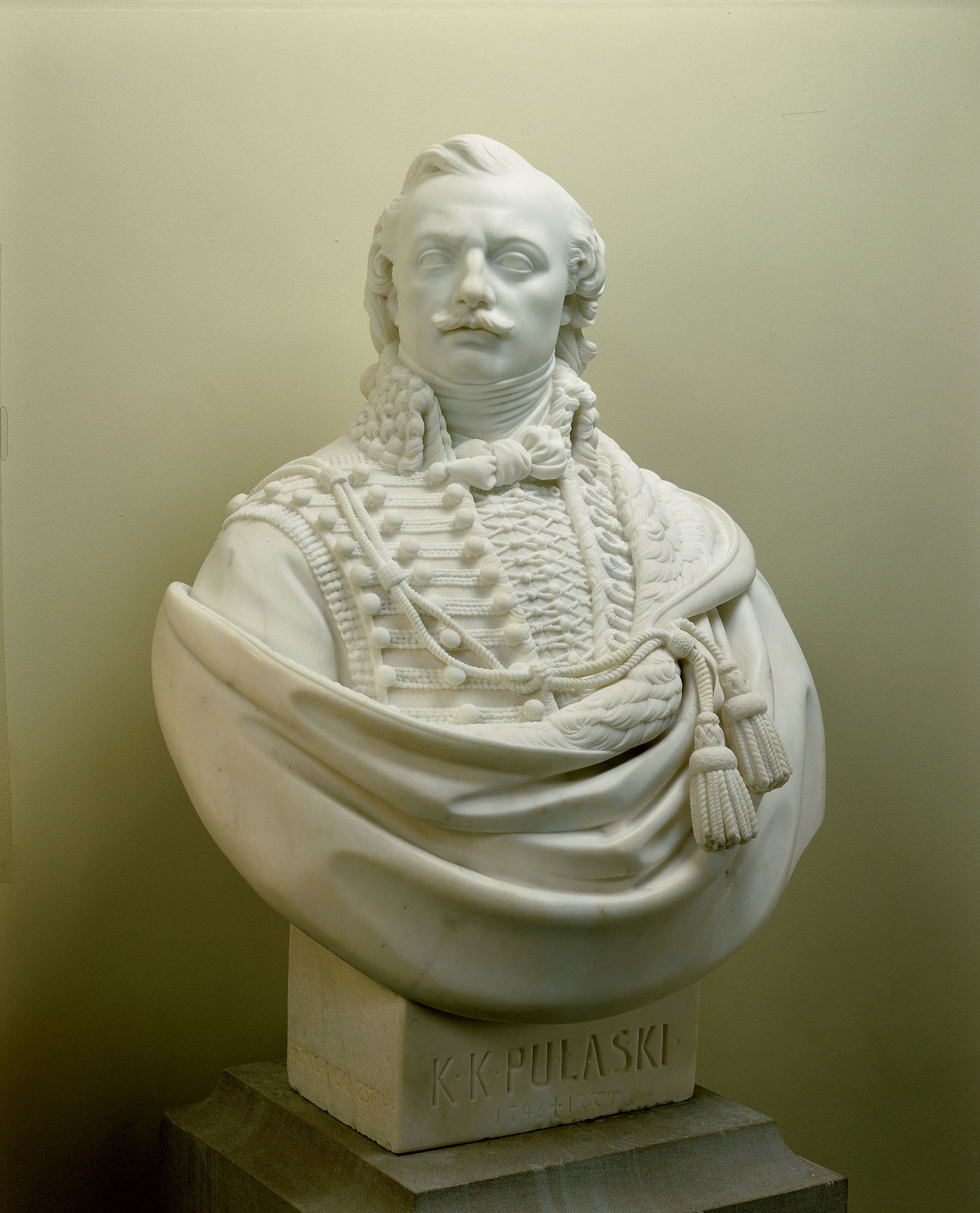
| Title | Casimir Pulaski |
| Artist/Maker | Henry Dmochowski Saunders ( 1810 - 1863 ) |
| Date | 1857 |
| Medium | Marble |
| Dimensions | h. 39 x w. 27.63 x d. 17.75 in. (h. 99.1 x w. 70.2 x d. 45.1 cm) |
| Credit Line | U.S. Senate Collection |
| Accession Number | 21.00015.000 |
Sculptor Henry Dmochowski Saunders was born in 1810 in Lithuania, then part of Russian Poland. He immigrated to America in the early 1850s and added the English name Saunders to his original surname Dmochowski. The artist settled in Philadelphia, where he exhibited numerous portrait medallions and sculptures of prominent Americans and Europeans at the Pennsylvania Academy of the Fine Arts. Four years later he moved to Washington, D.C. In 1857 Saunders wrote to Captain Montgomery C. Meigs, superintendent of the Capitol extension, seeking a contract to execute a marble bust based on his existing medallion of Casimir Pulaski. Although Saunders succeeded in selling a bust of another Polish soldier of the American Revolution, General Tadeusz Kosciuszko, to the Joint Committee on the Library, no action was taken on the Pulaski likeness. Saunders returned to Poland and died in 1863 while fighting for his country’s freedom.
On March 2, 1867, Congress appropriated $1,000 through the Sundry Civil Expenses Act to purchase the marble bust of Pulaski by Saunders. However, no further official action was taken until February 1882, when the Senate passed a resolution instructing the Joint Committee on the Library to “inquire into the alleged contract...[with] Henry D. Saunders for the execution of a bust, in marble, of the Count Pulaski, and to carry into effect the terms of said alleged contract, if the same be proven.” [1] By this time the bust was displayed in National Statuary Hall. It was finally acquired by the Joint Committee on the Library on March 11, 1882, when the executor for Saunders’s estate, John T. Pickett, was paid $1,500 from the Works of Art Fund. Although the artist regularly exhibited in America as “H.D. Saunders,” he signed the Pulaski bust with his original surname, Dmochowski.
1. U.S. Senate, Senate Journal (13 February 1882) 47th Cong., 1st sess., 296.
“I could not submit to stoop before the sovereigns of Europe, so I came to hazard all for the freedom of America,” wrote Casimir Pulaski to Congress shortly before his death. [1] Born into a noble family in the Warsaw district of Poland, Pulaski fled the country in 1772 following an unsuccessful rebellion against Russian domination. In Paris the young Pole met Benjamin Franklin, who provided him with an introduction to George Washington. Pulaski arrived in the United States in 1777 and joined the American Revolution, initially as a volunteer at the Battle of Brandywine. On Washington's recommendation, the Continental Congress appointed Pulaski brigadier general and assigned him to command the cavalry. Pulaski so influenced the development of that branch of the military that he has been called the Father of the American Cavalry. In 1778, after encountering dissension from his officers because of his foreign background, Pulaski resigned his commission and received permission to form an independent corps. Called the Pulaski Legion, it was made up largely of European soldiers. In 1779 Congress ordered the legion to provide support to American forces in the South. During the siege of Savannah, Pulaski was wounded; he developed gangrene and died two days later at the age of 32.
The valiant war service and heroic death of Pulaski brought forth an emotional response from Americans. Forts, monuments, towns, streets, bridges, and schools in many cities were named for the celebrated Polish commander. New monuments were also built in his honor throughout the country. Each year a Pulaski Day parade is held in New York City in recognition of his service during the American Revolution.
1. Miecislaus Haiman, Poland and the American Revolutionary War (Chicago: Polish Roman Catholic Union of America, 1932), 27.